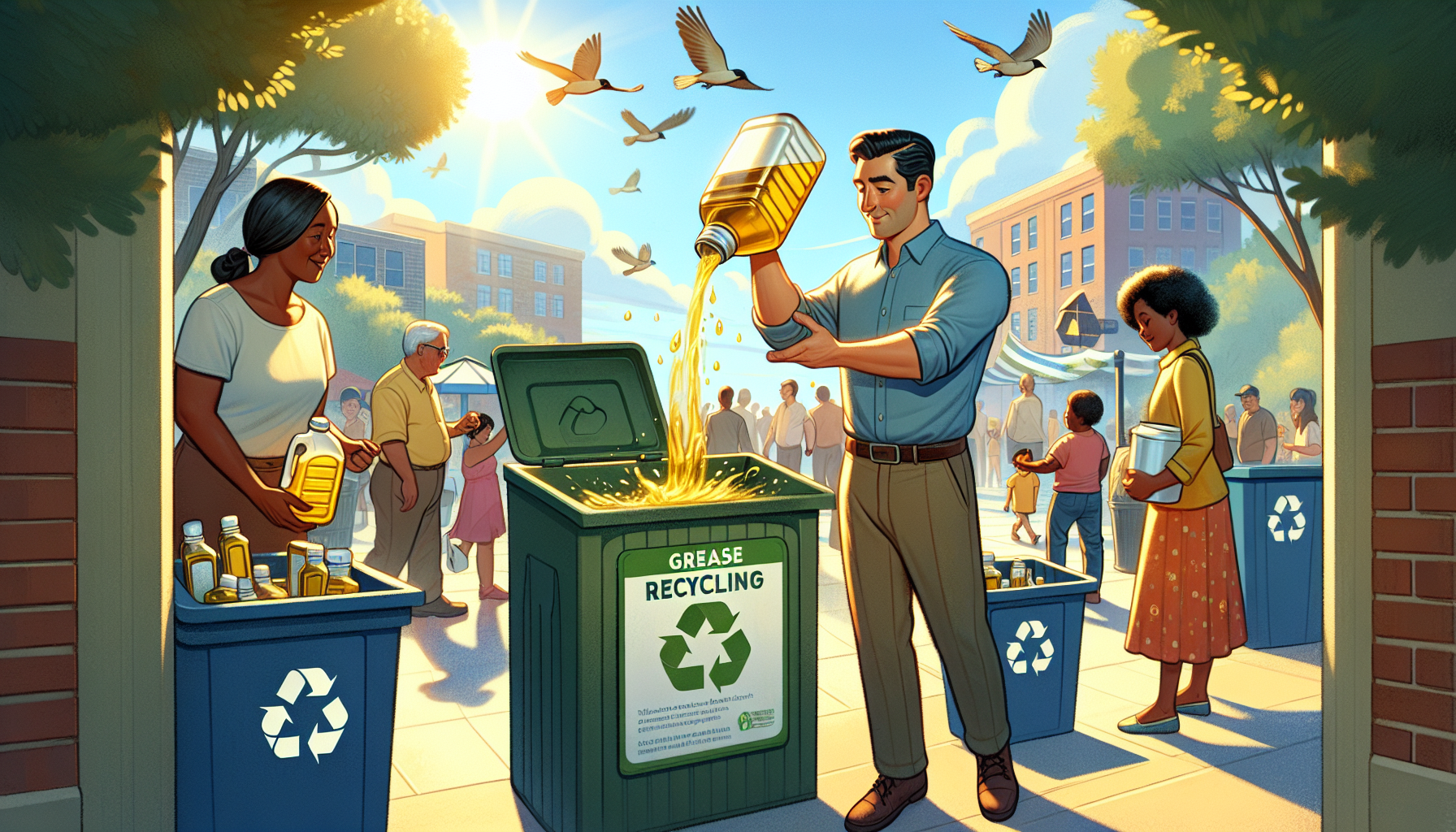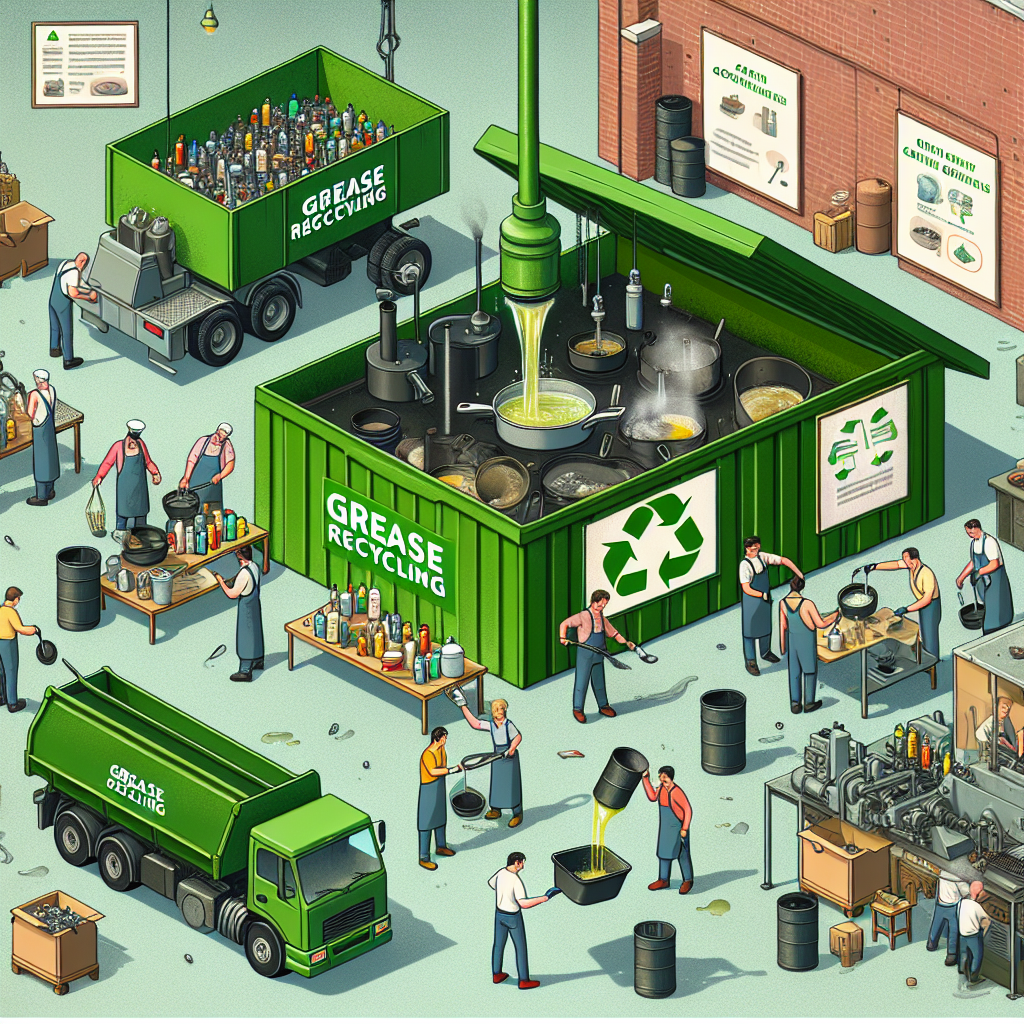Introduction
In recent years, the sustainability movement has gained significant momentum across various sectors, prompting industries to seek innovative and practical methods of conserving resources. One such initiative that has garnered attention is the grease recycling program. Grease, often regarded as waste in the food industry, possesses remarkable potential for repurposing and environmental benefits. This article delves into the intricacies of grease recycling, highlighting its importance, process, benefits, challenges, and future prospects.
The Importance of Grease Recycling
The food service industry, encompassing restaurants, hotels, and food processing plants, produces vast quantities of grease. Traditionally, this grease, along with fats and oils, was merely disposed of, posing significant environmental hazards. When discarded improperly, grease can clog sewage systems, leading to costly maintenance and environmental contamination. In contrast, grease recycling transforms this waste into valuable resources, promoting environmental sustainability and economic efficiency.
Recycling grease helps mitigate harmful emissions. When left to decompose, grease releases methane, a potent greenhouse gas. By converting waste grease into biodiesel or other reusable products, the methane emissions are significantly reduced. Furthermore, grease recycling conserves water resources, as it prevents grease from entering water treatment facilities where it usually requires extensive cleaning.
The Process of Grease Recycling
The process of grease recycling involves several steps designed to efficiently convert waste grease into useful products. Initially, grease traps and interceptors collect fats, oils, and grease (FOG) from kitchen wastewater. These traps are essential in preventing FOG from entering municipal sewage systems. Once collected, the grease undergoes a filtration process to remove food particles and other contaminants.
After filtering, the grease is heated to separate water and solid impurities, resulting in a refined product known as yellow grease. Yellow grease is a crucial ingredient in the production of biodiesel. In specialized facilities, yellow grease is transesterified, a chemical reaction that converts it into biodiesel and glycerin. Biodiesel, a renewable energy source, can be utilized to power vehicles, generators, and heating systems, while glycerin finds applications in various industries, including pharmaceuticals and cosmetics.
The Benefits of Grease Recycling
Grease recycling offers a myriad of environmental and economic benefits. Firstly, it significantly reduces the volume of waste destined for landfills, alleviating pressure on overburdened waste management systems. By diverting waste grease to recycling operations, the burden on landfill sites is lessened, contributing to the sustainability of waste management practices.
Additionally, the production of biodiesel from recycled grease presents an eco-friendly alternative to traditional fossil fuels. Biodiesel burns more cleanly, producing fewer pollutants such as carbon monoxide, particulate matter, and sulfur dioxide. This cleaner combustion results in improved air quality and decreased health risks associated with air pollution.
Economically, grease recycling can lead to substantial cost savings for businesses. Restaurants and food establishments can potentially reduce their waste disposal costs and even generate revenue by selling their waste grease to recycling companies. Moreover, the growth of the biodiesel market presents opportunities for job creation and economic stimulation in the recycling and renewable energy sectors.
Challenges in Implementing Grease Recycling Programs
Despite its myriad benefits, the implementation of grease recycling programs is not without challenges. One primary obstacle is the lack of awareness and education among stakeholders, including business owners, employees, and the general public. Many are still unaware of the potential benefits of grease recycling and the proper methods for collecting and disposing of FOG.
Logistics can also pose a significant challenge. Establishing an efficient collection and transportation network for waste grease requires substantial investment and coordination. Smaller businesses may find it difficult to justify the initial costs associated with installing grease traps and participating in recycling programs.
Moreover, variations in local regulations and policies can affect the feasibility of grease recycling initiatives. Inconsistent guidelines and requirements can create confusion and hinder the widespread adoption of such programs. Therefore, it is crucial for industry associations, governmental bodies, and environmental organizations to work collaboratively to establish uniform standards and provide support to businesses willing to participate in grease recycling.
Future Prospects
The future of grease recycling programs appears promising, driven by advancements in technology and increasing environmental consciousness. Innovations in grease trap design and filtration processes can enhance the efficiency of grease collection and processing, making it more accessible and cost-effective for businesses of all sizes.
Government incentives and policies promoting renewable energy and waste management can also play a significant role in encouraging the adoption of grease recycling programs. Subsidies, tax breaks, and grants can help offset the initial costs associated with participating in such initiatives, making it more attractive for businesses to invest in sustainability practices.
Furthermore, public awareness campaigns and educational initiatives can bridge the knowledge gap, fostering a culture of sustainability within the food service industry. By highlighting the environmental and economic benefits of grease recycling, stakeholders can be encouraged to actively participate and contribute to a greener future.
Conclusion
In conclusion, grease recycling programs represent a valuable opportunity to transform waste into a valuable resource, contributing to environmental sustainability and economic efficiency. By implementing grease recycling initiatives, the food service industry can significantly reduce waste, curb harmful emissions, and promote the use of renewable energy sources. Although challenges exist, the future prospects for grease recycling look bright, driven by technological advancements, supportive policies, and growing environmental awareness. Collective efforts from stakeholders at all levels can pave the way for a cleaner, greener, and more sustainable future.




